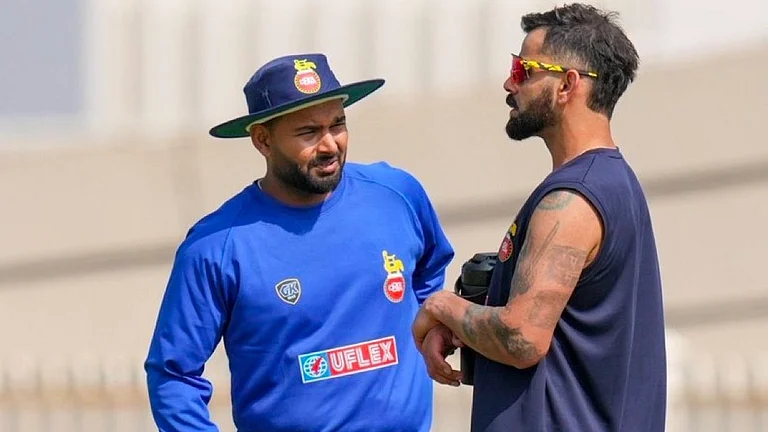The latest budgetary exercise indeed banks on the economy’s recent highergrowth trajectory to meet the UPA’s social sector and fiscal responsibilitycommitments. Thanks to booming GDP growth, Chidambaram’s budget thus has beenable to step up
allocations for the National Rural Employment Guarantee Scheme in 200 districtsand Bharat Nirman to build national highways, rural roads, houses for the poorand so on which are mandated under the National Common Minimum Programme (NCMP)without raising tax rates. And at the same time, he also seeks to reduce therevenue deficit by 0.5 per cent of GDP and fiscal deficit by 0.3 per cent in2006-07 to adhere to the discipline of the Fiscal Responsibility and BudgetManagement Act, 2004 (FRBM).
With 8.1 per cent GDP growth expected in 2005-06 -- with the average touching7.5 per cent plus during the last three years -- the finance minister has beenable to show lower revenue and fiscal deficits in the current fiscal itself. Arevenue deficit is incurred when the government’s tax revenues cannot meet itsroutine administrative expenditures like wages and subsidies. If it borrows,this is reflected in the fiscal deficit. In 2005-06, the government’s revenuedeficit beats the FRBM target by 0.1 per cent to reach 2.6 per cent while thefiscal deficit is lower than the target by 0.2 per cent at 4.1 per cent of GDP.
Expecting this growth momentum to continue clearly lies at the heart ofChidambaram’s strategy. Not content with a 7.5 per cent plus trajectory duringthe last three years, the Prime Minister has raised the bar higher to 10 percent and the "government is committed to take the country to that high growthpath" stated the finance minister in his budget speech. Faster GDP growthleads to buoyancy in tax revenues. With growth of 7.5 to 8 per cent in 2006-07and beyond, the ratio of the central government’s taxes to GDP will risesignificantly to meet his NCMP spending and FRBM commitments.
With such favourable growth winds behind him, all the finance minister has to dois unfurl his sails to move faster. Which is why he has chosen to do nothing butencourage the ongoing investment boom by lowering rather than raising taxes. Forinstance, lower duties on small cars encourage greater demand for such vehiclesand turn India into a global hub for manufacturing. Lower duties in the budgetalso have made idli and dosa, pasta and soft drinks cheaper. Not surprisingly, aleading columnist has called it a "Maruti-idli-pasta" budget as itencourages the middle class to splurge on these items!
While the finance minister thus has chosen to budget for growth, multilateralagencies like IMF have recently argued that this is also a "golden opportunity"to tackle India’s fiscal challenges decisively. This issue not only involvesmeeting FRBM targets in letter but spirit as well. Take the revenue deficit, forinstance. While growth leads to a buoyancy in the tax-GDP ratio, this by itselfis not sufficient to reduce, leave alone eliminate, the deficit altogether.Decisive steps will also have to be taken to rein in non-plan revenueexpenditures on interest payments, salaries of administration and subsidies.
Capping such expenditures has eluded most finance ministers till now.Chidambaram is no exception as he has virtually thrown in the towel to rein insubsidies in his recent budget as the matter is proving to be "highly divisive".On wages and salaries of administration, again, there is no move to control suchexpenditures. As if all of this weren’t bad enough, the UPA government hasgone ahead announcing a sixth pay commission when the centre and states haven’trecovered from implementing the fifth pay commission, with the fiscal deficitrising in all the years subsequent to the award.
The UPA government, of course, is committed to cleaning up the fiscal mess butthe lower revenue and fiscal deficits budgeted in 2006-07 rest on unrealisticassumptions capping non-plan revenue expenditures on subsidies and wages andsalaries of administration. It is election season again in India – with stateassembly polls due in five important states -- and these pressures are bound toimpact the effort to limit non-plan revenue expenditures. The revenue deficitthus might balloon beyond the FRBM target, resulting in higher borrowings or ahigher fiscal deficit in 2006-07.
The faster growth conjuncture thus might not result in the UPA governmenttackling our fiscal challenges. While the intent is certainly there, theimperatives of coalition politics ahead of important assembly elections staysthe hand of the finance minister in this regard. They also stay his hand inpushing through important reforms like disinvesting the government’s stake inpublic sector undertakings. Although he has taken credit for Rs 3,640 crore fromsuch sales, the intense opposition of the Left parties – on which the UPAgovernment depends for its political survival -- has stalled the processaltogether.
While the Indian economy’s recent growth momentum has enabled Chidambaram tomeet his NCMP and FRBM commitments in his latest budget, the big question iswhat will happen when the bar is raised to 10 per cent? The complete abdicationof economic reforms altogether is bound to have its impact on medium-term growthprospects of the Indian economy. Meeting 10 Janpath then is obviously nosolution for Chidambaram’s woes when he has to put the country’s growthfoundations on a stronger and more sustainable footing through reform.
N. Chandra Mohan is a Delhi-based analyst of economic and business affairs.






















